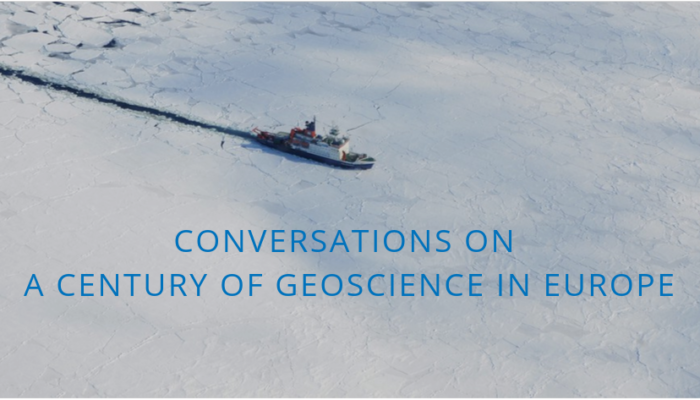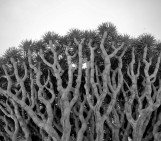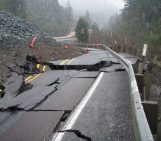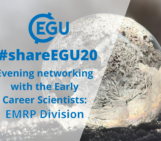
Over the last century, geoscientists have made incredible contributions to our understanding of the Earth, the solar system, and beyond. Inspired by the American Geophysical Union (AGU) and the International Union of Geodesy and Geophysics (IUGG) centennials, which are celebrated in 2019, we would like to highlight Europe’s role in shaping the geosciences and the great achievements of European geoscientists within the last century.
In this series of interviews, scientists reflect on the last 100 years of Earth, space and planetary sciences in Europe and share their perspectives on the future.
Judith A. McKenzie: Professor em. of Earth System Sciences in the Geological Institute, Department of Earth Sciences at the ETH Zurich
 In your opinion, what are some of the biggest ways Europe and European scientists have shaped the geosciences within the last century?
In your opinion, what are some of the biggest ways Europe and European scientists have shaped the geosciences within the last century?
Without a doubt, the most important way that Europe and European scientists have shaped the geosciences within the last century is through contributions to the development of the plate tectonic/seafloor spreading theory, which revolutionised Earth science. Combining geophysical and geologic data, the original hypothesis was presented in major scientific publications beginning in the early 1960s. However, in order to test this hypothesis, the Deep Sea Drilling Project (DSDP) was initiated in 1968. Although dominated by US scientists and funding, a significant number of European Earth scientists contributed their skills and knowledge to confirm the validity of the hypothesis within the first ten years of the drilling program.
In particular, two European scientists were among the first shipboard participants in this great scientific endeavour. They are Maria Bianca Cita (born 1924, age 94 years), from the University of Milan, Department of Earth Sciences and Kenneth J. Hsü (born 1929, age 90 years), from ETH Zürich, Geological Institute. DSDP Leg 2 (October to November 1968) was conducted as the first drilling campaign to test the hypothesis of continental drift and sea-floor spreading by sampling the oldest retrievable samples recovered from beneath the seafloor across the North Atlantic. Cita sailed as a shipboard (‘micro’) paleontologist on DSDP Leg 2 and helped establish an essential standard biostratigraphic reference section for the North Atlantic. Hsü sailed as a shipboard geologist (‘sedimentologist’) on DSDP Leg 3 (December 1968 to January 1969), which drilled into the seafloor at ten sites across the equatorial and South Atlantic and penetrated into basalt (basement) at all Mid-Atlantic Ridge sites.
The ages of basal sediment above basalt at all Ridge sites were found to be within a few million years of the inferred magnetic anomaly ages. The pattern supported an over-all half-spreading rate of nearly two centimetres per year for the past 76 million years. Thus, within the first year of the DSDP, two outstanding European scientists made major contributions providing key geologic evidence to succinctly test the plate tectonic/seafloor spreading theory. Furthermore, both Cita and Hsü were instrumental in the founding of an entirely new major field of Earth science research, that is, paleoceanography & paleoclimatology.
However, Sir Nicholas Shackleton (1937 – 2006) of the Godwin Institute for Quaternary Research, Department of Earth Sciences, Cambridge University was undoubtedly the most influential European scientist contributing to the evolution of the new field of palaeoceanography. Shackleton was a pioneer in the use of mass spectrometry to determine changes in climate as recorded in the oxygen isotope composition of calcareous microfossils. Based on his extensive stratigraphic compilations, he contributed significantly to one of the most important geological discoveries ever made, that is, that the Earth’s climate is precisely controlled by regular variations in the planet’s orbit. His research greatly influenced our present understanding of the mechanisms and causes of global warming.
Additionally, organic geochemistry became an increasingly important field of modern geoscience in the last century. Its origins were exclusively in Europe with European scientists having been very instrumental in the field’s development. The year 1936 marks the beginning of organic geochemistry with Alfred E. Treibs (1899-1983), a German organic chemist and the acknowledged ‘father’ of organic geochemistry, who discovered porphyrin pigments in shale, coal and crude oil, and traced the source of these molecules to their biological precursors. Following these developments, another major European contributor, Geoffrey Eglinton (1927-2016) from the University of Bristol, made significant advances in the field of organic geochemistry with his insights into the geological fate of organic compounds. Eglington was a pioneer of molecular-fossil research. In addition to the significance of his research on molecular biomarkers (‘chemical fossils’), he was responsible for developing numerous experimental techniques that remain in widespread use.
Which European researcher from the last century has influenced your work the most?
Without a doubt, Kenneth J. Hsü had a major influence on my career. Although raised in China with his graduate education obtained in the USA, Hsü was Professor of Experimental Geology in the ETH Zürich, Geological Institute from 1967-1994, and, thus, can be considered to be a European researcher. As my doctoral thesis advisor, he introduced me to the scientific method of seeking answers to geologic problems by approaching them from non-traditional but different angles. His unique way of examining geologic questions has influenced me throughout my career.
Nevertheless, perhaps, the European researcher who has had the overall greatest influence on my career is Maria Bianca Cita beginning from the first time I met her at a conference in Sicily in 1975. Not only was she an exceptional female role model for me, but her scientific interests ignited a passion for geology in me and, for that matter, everyone she encountered. In particular, during DSDP campaigns in the Mediterranean in 1970 and 1975, together with the shipboard scientific party (including Ken Hsü), Maria Cita was instrumental in the recognition of a major geologic event, that is, the deep desiccation of the Mediterranean basins during the Messinian Salinity Crisis (5.96 to 5.33 million years ago). To this day, this scientific discovery of the most recently deposited salt giant continues to drive major research programs in the geologic/geophysical community, particularly in Europe. Studies dealing with numerous phenomena, such as salt tectonics, related to this formation type are ongoing and, for example, include my own research to understand massive dolomite precipitation in association with ancient salt giants.
For the next generation of researchers, what skills/technology/concepts do you think will be the most important for advancing the next century of geoscience?
In my opinion, important advances in the next century of geoscience will be made through an improved knowledge of the microbial communities and associated viruses, which dominate the diverse systems of the Earth’s biogeosphere. Applying geomicrobiology and the, as of yet, undiscovered innovative uses of microbes have great future potential in the development of new technologies to solve geologic problems, such as mediating the negative effects of various types of waste deposits.
What do you think will be the biggest challenges for the geosciences in the next century?
Undoubtedly, the biggest challenges for the geosciences in the coming years will be associated with the anticipated climate change and growing world population and the need to explore and develop limited water and mineral resources. Meeting these challenges from a geologic prospective will be essential for the survival of the quality of life that we have come to expect in Europe during the last century.
Interview by Olivia Trani, EGU Communications Officer
You can find more of our interviews on a century of geoscience in Europe here:




